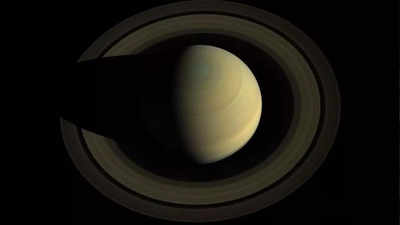- News
- Science News
- Will Saturn’s rings be invisible from March 2025? All you need to know about this celestial event
Will Saturn’s rings be invisible from March 2025? All you need to know about this celestial event
Saturn’s rings will become nearly invisible from Earth by March 2025 due to Saturn's axis tilting, aligning the rings edge-on with our line of sight. This rare event occurs every 29.5 years and offers a unique observation opportunity for astronomers before the rings reappear later in the year.

Representative Image
Saturn’s rings are known as one of the most stunning sights in our solar system. It provides a view that has amazed people for centuries. But in just six months, these rings are soon going to disappear from our sight, providing a unique opportunity for astronomers to witness an incredible cosmic event.
Galileo Galilei, renowned Italian astronomer, made the first recorded observations of Saturn back in the 17th century.
Recent advances in modern technology has led to an increase of our knowledge and understanding related to these captivating rings.
By March 2025, a major cosmic event will occur, during which Saturn’s rings will become nearly invisible from Earth.
This ring obscuration is not permanent. It’s part of a cycle that occurs roughly every 29.5 years, the time Saturn takes to orbit the Sun.
The rings will reappear before disappearing once again in November 2025.
Saturn’s rings are primarily composed of ice particles, rocky debris, and cosmic dust. The size of these components ranges from small particles of sand to large pieces similar in size to houses. The rings are not a unified structure but are instead separated into different parts, such as the prominent A, B, and C rings, as well as fainter rings like D, E, F, and G.
The rings of Saturn are formed due to the gravitational effects of its numerous moons. Some of these moons act as "shepherds," helping to preserve the structure of the rings by influencing the movement of the ring particles through their gravitational force. Scientists are actively researching the origin of Saturn's rings, and there are theories suggesting that they could be the remnants of a destroyed moon or comet, or they may be leftover material from Saturn's formation over 4 billion years ago.
Galileo Galilei, renowned Italian astronomer, made the first recorded observations of Saturn back in the 17th century.
He saw what he thought were “ears” protruding from the planet due to the limitations of his basic telescope. However, his observations set the stage for future explorations into Saturn’s remarkable ring system.
Recent advances in modern technology has led to an increase of our knowledge and understanding related to these captivating rings.
By March 2025, a major cosmic event will occur, during which Saturn’s rings will become nearly invisible from Earth.
This unusual phenomenon will occur due to Saturn's axis tilting, causing the rings to align edge-on with our line of sight. The celestial hide-and-seek that will make Saturn’s rings a challenge to observe until they return to view later in the year.
This ring obscuration is not permanent. It’s part of a cycle that occurs roughly every 29.5 years, the time Saturn takes to orbit the Sun.
The rings will reappear before disappearing once again in November 2025.
Saturn’s rings are primarily composed of ice particles, rocky debris, and cosmic dust. The size of these components ranges from small particles of sand to large pieces similar in size to houses. The rings are not a unified structure but are instead separated into different parts, such as the prominent A, B, and C rings, as well as fainter rings like D, E, F, and G.
The rings of Saturn are formed due to the gravitational effects of its numerous moons. Some of these moons act as "shepherds," helping to preserve the structure of the rings by influencing the movement of the ring particles through their gravitational force. Scientists are actively researching the origin of Saturn's rings, and there are theories suggesting that they could be the remnants of a destroyed moon or comet, or they may be leftover material from Saturn's formation over 4 billion years ago.
End of Article
FOLLOW US ON SOCIAL MEDIA

